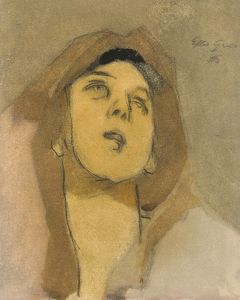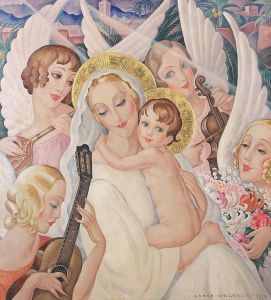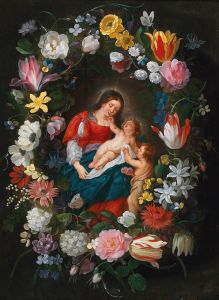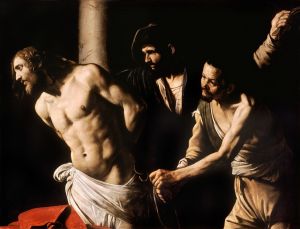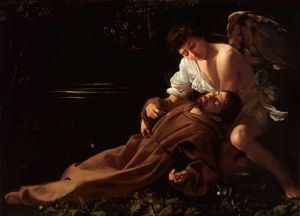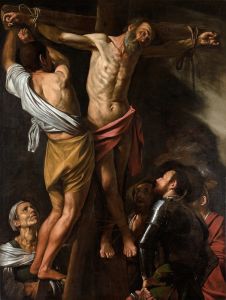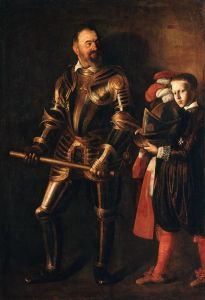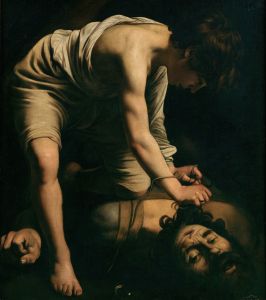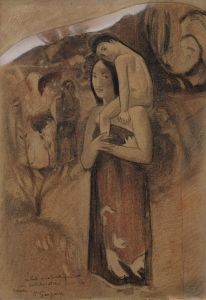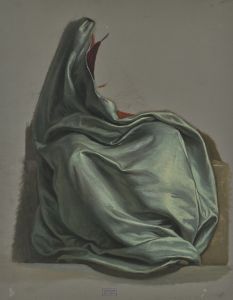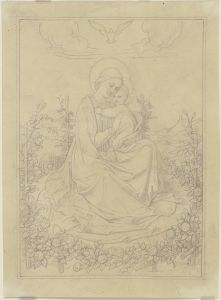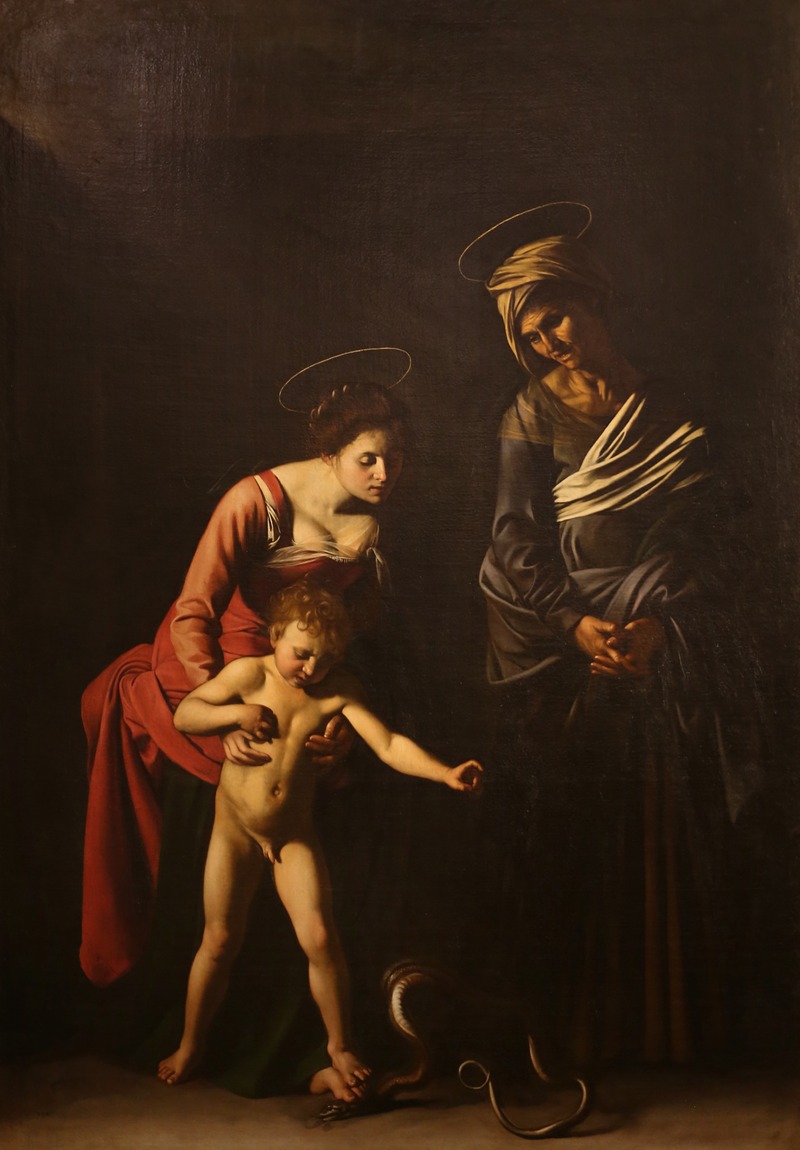
Madonna and Child with Saint Anne
A hand-painted replica of Caravaggio’s masterpiece Madonna and Child with Saint Anne, meticulously crafted by professional artists to capture the true essence of the original. Each piece is created with museum-quality canvas and rare mineral pigments, carefully painted by experienced artists with delicate brushstrokes and rich, layered colors to perfectly recreate the texture of the original artwork. Unlike machine-printed reproductions, this hand-painted version brings the painting to life, infused with the artist’s emotions and skill in every stroke. Whether for personal collection or home decoration, it instantly elevates the artistic atmosphere of any space.
"Madonna and Child with Saint Anne" is a painting by the Italian Baroque master Caravaggio, completed in 1605-1606. This work was commissioned for the Archconfraternity of the Papal Grooms for their chapel in the Basilica of Saint Peter in Rome. However, the painting was rejected by the confraternity, possibly due to its unconventional depiction of religious figures, and was later acquired by Cardinal Scipione Borghese. It is currently housed in the Borghese Gallery in Rome.
The painting depicts the Virgin Mary, her mother Saint Anne, and the Christ Child in a composition that is both dramatic and intimate. Caravaggio's use of chiaroscuro, the stark contrast between light and dark, is evident in this work, highlighting the figures against a dark background and lending a three-dimensional quality to the scene. This technique draws the viewer's attention to the central figures and their expressions, which convey a sense of realism and emotional depth.
In the painting, the Virgin Mary is shown seated, holding the Christ Child, who is depicted as a lively and robust toddler. The child is engaged in an act of triumph over evil, symbolized by his foot placed on a serpent, which is a traditional representation of sin and Satan. This imagery is rooted in the biblical prophecy from Genesis 3:15, which speaks of the offspring of the woman crushing the serpent's head. Saint Anne, the mother of Mary, stands behind them, her presence adding a generational depth to the scene.
Caravaggio's depiction of the figures is notable for its naturalism. The Virgin Mary is portrayed as a young, ordinary woman, devoid of the idealized beauty often seen in earlier Renaissance depictions. Her expression is serene yet contemplative, suggesting a deep awareness of her child's divine mission. Saint Anne, on the other hand, is depicted as an elderly woman, her face marked by age, which contrasts with the youthful appearance of Mary and the child.
The painting's rejection by the Archconfraternity may have been due to its departure from traditional iconography and its realistic portrayal of sacred figures. Caravaggio was known for his innovative approach to religious subjects, often infusing them with a sense of immediacy and humanity that challenged conventional norms. This approach, while celebrated today, was sometimes controversial during his lifetime.
"Madonna and Child with Saint Anne" exemplifies Caravaggio's mastery of light and shadow, as well as his ability to convey complex theological themes through simple yet powerful imagery. The painting remains an important example of Caravaggio's contribution to the Baroque movement and his influence on subsequent generations of artists. Its presence in the Borghese Gallery allows viewers to appreciate the artist's skill and the enduring impact of his work on the history of art.






